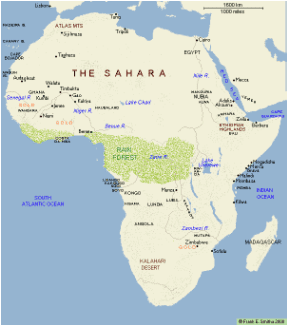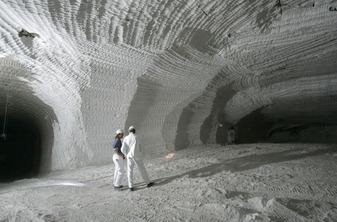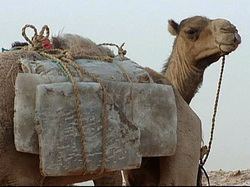Local time Saturday 5:11 AM | ||
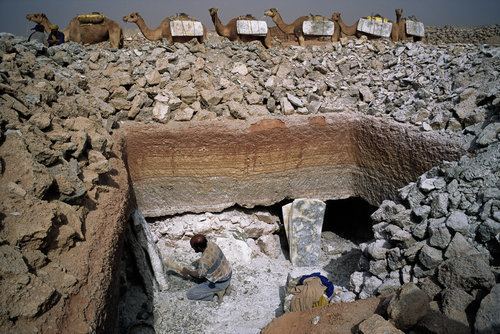 | ||
Taghaza (also Teghaza) is an abandoned salt-mining centre located in a salt pan in the desert region of northern Mali. It was an important source of rock salt for West Africa up to the end of the 16th century when it was abandoned and replaced by the salt-pan at Taoudenni which lies 150 km (93 mi) to the southeast. Salt from the Taghaza mines formed an important part of the long distance trans-Saharan trade. The salt pan is located 857 km (533 mi) south of Sijilmasa (in Morocco), 787 km (489 mi) north-northwest of Timbuktu (in Mali) and 731 km (454 mi) north-northeast of Oualata (in Mauritania).
Contents

Portugal ynaemp iberian rivalry 20 sacking taghaza
Sixteenth century

At some date Taghaza came under the control of the Songhai Empire which had its capital at the city of Gao on the Niger River 970 km (600 mi) across the Sahara. Al-Sadi in his Tarikh al-Sudan chronicles the efforts of the Moroccan rulers of the Saadi dynasty to wrestle control of the mines from the Songhai during the 16th century. In around 1540 the Saadian Sultan Ahmad al-Araj asked the Songhai leader Askia Ishaq I to cede the Takhaza mines. According to al-Sadi, Askia Ishaq I responded by sending men to raid a town in the Dara valley as a demonstration of Songhai power. Then in 1556-7 Sultan Muhammed al-Shaykh occupied Taghaza and killed the Askia's representative. However the Tuareg shifted the production to another mine called Taghaza al-ghizlan (Taghaza of the gazelles). On his succession in 1578 Ahmad al-Mansur asked for the tax revenues from Taghaza but Askiya Dawud responded instead with a generous gift of 47 kg of gold. In 1586 a small Saadian force of 200 musketeers again occupied Taghaza and the Tuareg moved to yet another site – probably Taoudeni. Finally, a new demand by Ahmad al-Mansur in 1589–90 was met with defiance by Askiya Ishak II. This provided the pretext for Ahmad al-Mansur to send an army of 4,000 mercenaries across the Sahara led by the Spaniard Judar Pasha. The defeat of the Songhai in 1591 at the Battle of Tondibi led to the collapse of their empire. After the conquest Taghaza was abandoned and Taoudenni, situated 150 km (93 mi) to the southeast and thus nearer to Timbuktu, took its place as the region's key salt producer.
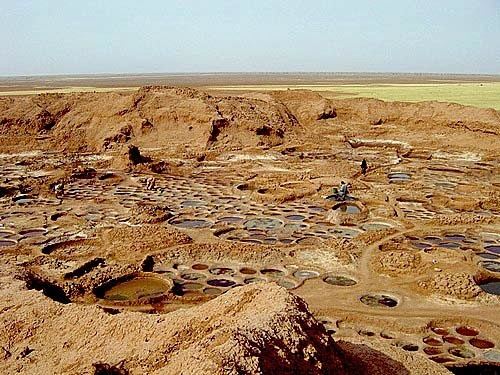
In 1828 the French explorer René Caillié stopped at Taghaza on his journey across the Sahara from Timbuktu. He was travelling with a large caravan that included 1,400 camels transporting slaves, gold, ivory, gum and ostrich feathers. At that date the ruins of houses constructed of salt bricks were still clearly visible.
Ruins

Taghaza is home to the remnants of two distinct settlements situated on opposite sides of an ancient salt lake, or sabkha, separated by about 3 kilometers. The more extensive, westerly settlement sprawled over roughly 400 meters by 200 meters, with all structures except the mosque aligned from northwest to southeast, perpendicular to the prevailing wind direction. Similarly, the houses in the smaller, easterly settlement followed the same alignment, covering an area of 200 meters by 180 meters. The reason for the dual settlements is not known but could be connected with Taghaza's service both as a salt mine and as a stopping point on an important trans-Saharan trade route.

